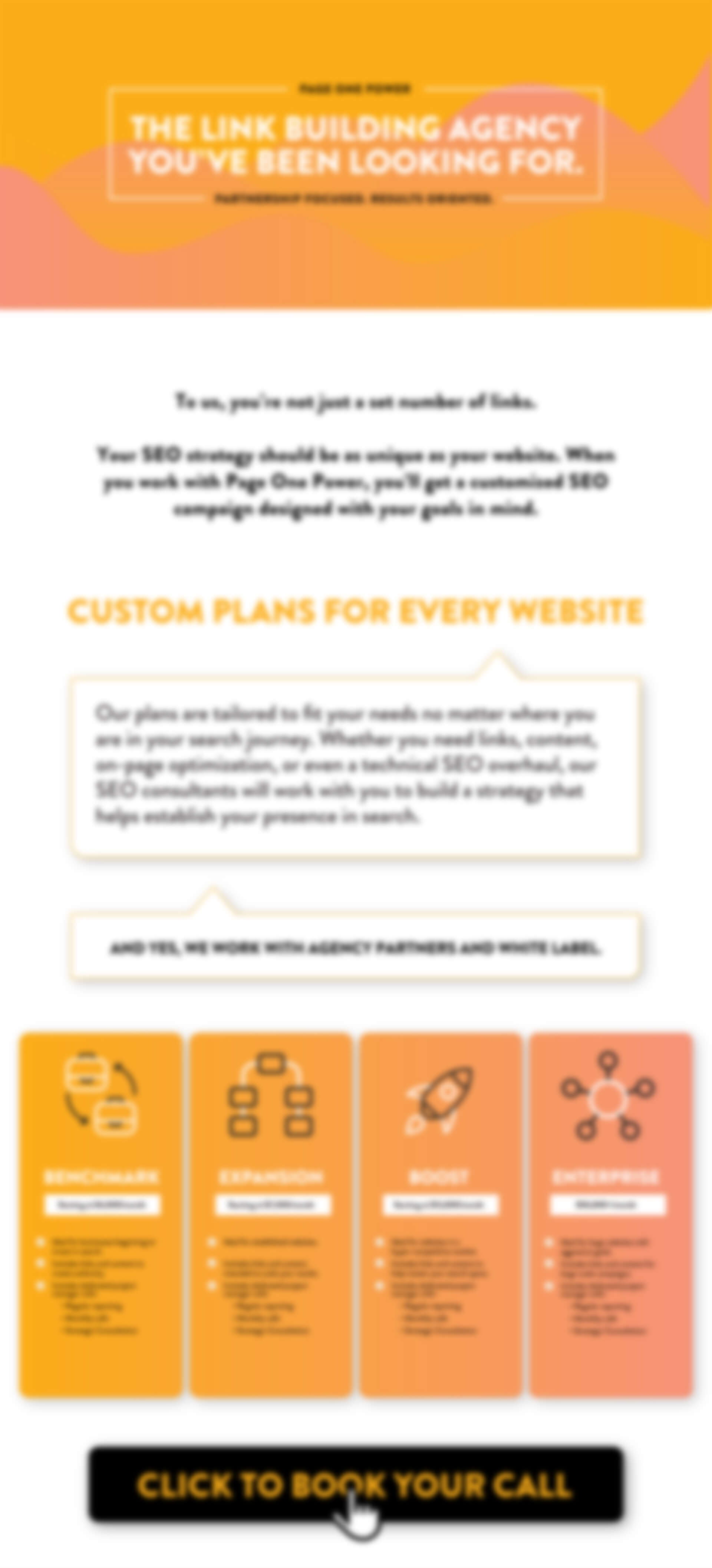What is HTML?
Hypertext Markup Language (HTML) is a markup language that is used for documents and pages being displayed in a web browser. HTML is everywhere online, powering the World Wide Web as we know it today.
What Is HTML and Why Does It Matter for SEO?
Hypertext Markup Language (HTML) is a markup language that is used for documents and pages being displayed in a web browser. HTML tells browsers what elements a page contains, which of those elements should be displayed to users, and how those elements should be displayed based on a website’s corresponding CSS rules. HTML allows you to see things like bolded text, paragraph breaks, hyperlinks, and other visual elements on a page that are not the text or content itself.
You could not experience the world wide web in the way that you currently do without HTML. It is the language of the web — nearly 90% of web pages use HTML — and has helped standardize and enhance the online experience for users around the world. Because it is so ubiquitous, HTML is a necessity for many different purposes, processes, and industries, including search engine optimization. Before you can take full advantage of HTML for your SEO efforts, however, you need to learn more about this language and how it works to power the web.
A Brief History of HTML
HTML has existed for almost 30 years. Tim Berners-Lee, creator of the World Wide Web as well as URLs, published an informal document titled “HTML Tags” in October 1991. This document contained 18 different HTML tags that served as the basis for the first official version of HTML.
Since this initial draft, HTML has been revised and expanded upon numerous times:
- HTML 2: Published on November, 24, 1995;
- HTML 3: Published on January 14, 1997;
- HTML 4: Published on December 18, 1997, and updated several times; the final update occurred in May 2000;
- HTML 5: Published on October 28, 2014; the most recent update occurred on December 14, 2017.
Each update has made HTML more sophisticated, more expansive, and more capable than it was before. HTML5 is the version currently in use today as the HTML Living Standard, which lists well over 100 different tags. The latest version allows for greater multimedia functionality than previous iterations.
It’s worth noting that, despite these advancements, HTML 5 is not a programming language; it cannot be used for color, different font types, animation, audio, or interactivity on its own. HTML must be used in conjunction with other computer languages, such as Cascading Style Sheets (CSS) or JavaScript, to make those features work on web pages.
How Does HTML Work?
HTML consists of short codes, called tags, that tell a web browser how the text within those tags should appear on the page. These tags are typed into a text file ending in either a .html or .htm extension, saved, and read by a web browser. The browser then translates the text file into a visible form that can be read by humans who visit that web page.
HTML is like the foundation of a building, and HTML tags are like the building blocks of that foundation. Tags are denoted with angle brackets — < and > — which are crucial for structuring the content on a web page into different sections and paragraphs. They separate the body content of a page from that HTML code. Tags themselves will not appear on a web page, but when used correctly, their effects will.
Here’s a quick example of how HTML tags work. Let’s say you want to bold some of the text on your web page to make it stand out. For this, you’ll have to use <b></b>, which is the tag for bolded text. Simply enclose the text you would like to bold within those tags as such:
<b>This text will be bold,</b> but this will not.
You must always remember to close any tags that you open, otherwise the tag’s effects will bleed into other parts of the text or page. While HTML can get complex when you layer in multiple tags, forget to close your tags, or use additional programming or coding languages, the way it works is, at its core, fairly simple.
SEO Keyword Research
Read our comprehensive SEO keyword research guide to learn how you can get your web pages to show up higher in the SERPs.
Link Building Guide
Check out our ultimate link building guide to learn how to earn powerful backlinks to empower your web content in search.
The Relationship between HTML & SEO
Because HTML is a major backbone of the entire web, it plays a critical role in the world of search and SEO. The HTML of a web page is how web crawlers see and understand that page. Crawlers then extract the information and data from HTML tags and add it to their index of web pages they have already visited. Then, when users look for information using a search engine, it can quickly and appropriately render that web page in the search engine results pages (SERP) for relevant queries. When you see a SERP for any query, you aren’t seeing the live web as it actually exists — you’re seeing a representation of that page as told to a search engine by its HTML.
However, this isn’t the only way that HTML relates to SEO. HTML tags also provide search engines with data about the content on a page, such as what text on the page is the title, where the paragraph breaks are in the content, or whether or not a link should be followed. This makes use of HTML tags important not only for technical SEO, but also for on-page SEO and even backlink acquisition.
HTML & The User Experience
Additionally, HTML helps create a positive online experience for users. HTML tags organize your content and make your site easier for readers to use; essentially, they’re all but a requirement for creating effective, valuable content that is accessible to readers. Further, HTML is much simpler than many other common computer languages, meaning that pages and websites load more quickly if they have HTML coding. Not only is this a ranking factor, but it also gives users a faster, better experience on your website (and it gives search engines a greater amount of content that is easier to crawl). And though providing a good user experience isn’t necessarily a direct ranking factor, it is important for creating pages that are actually worthy of ranking in the SERPs.
However, HTML is only one part of creating a positive online experience for users, with CSS being the other. If HTML is the foundation of a web page, CSS is like a fresh coat of paint on the walls constructed with HTML tags. CSS is used to display fonts, colors, spacing, and other visual elements that make a page aesthetically pleasing for human readers. A given page can exist without CSS, but it will likely look unappealing and be difficult for humans to read. If you’ve ever stumbled upon a page with broken CSS and are just viewing its HTML, you’ve likely left that page in favor of another one that is more attractive, visually stimulating, and easier to read.
CSS works in conjunction with HTML to enhance and improve the user experience. This is absolutely crucial to keep readers engaged with your content and site, as the majority of readers scan or skim online content to find the information they want as quickly as possible and don’t read every single word on a page. Even if your page has perfectly-crawable HTML and is otherwise well-optimized, it likely won’t be able to satisfy searcher intent, provide a good user experience, and perform well in the SERPs if there isn’t CSS to support it.
List of SEO HTML Tags
That being said, not every HTML tag is necessary — or even helpful — for SEO. In fact, only a handful of HTML tags are important to incorporate into your SEO efforts:
Alt Tag
Alt tags are used to describe images on a web page. It is written text that literally explains what an image looks like. Alt text is primarily used for individuals with visual impairments who use text-to-speech readers to navigate their online experiences, or when images are broken and fail to load on a web page. In addition, because search engines can’t understand images in the same way humans do, alt text allows search engines to better “see” the image.
Header Tags
Header tags are used to tell search engines about the hierarchy and organization of the content on a page, and they are one of the most significant elements of on-page SEO. Headers tell search engines what keywords you would like to rank for, what the content of a page is about, and which parts of that page are the most important. Search engines give header tags weight in ascending order of significance; H1 is the most important, H2 the second most, H3 the third most, and so on. They also help break up large pieces of text for readers and make content easier to read.
Link Tags
There are a variety of different HTML tags you can use to better describe the links on your site. Among the most common and popular tags are:
- Canonical tag: Indicates to search engines that multiple URLs are essentially the same page and that the tagged link is the “preferred” or original source of content;
- Dofollow: Indicates to search engines that a link should be “followed” and should pass link equity between the linked and linking pages. Unless otherwise specified, all links are followed by default;
- Nofollow tag: Indicates to search engines that a link should not be “followed” and should not pass link equity between the linked and linking pages;
- Sponsored tag: Indicates to search engines that a link was paid for or placed within content explicitly for advertorial purposes;
- UGC tag: Indicates to search engines that content was created by a site’s users, not its editors or owners.
Meta Description
A meta description is a short synopsis of a given page that appears in the SERPs rather than on the page itself. The meta description tag is what makes it visible in the SERPs. While not a direct ranking factor, meta descriptions can entice users to select your result over your competitors, improve your click-through rate, and reduce your bounce rate when they are used correctly. Ideally, each and every page of your site should have a unique, accurate meta description.
Schema
Schema markup is a type of structured data that can be used to improve how the content of a page is understood and interpreted by search engine crawlers. With schema, you can communicate to search engines the meaning of the content on a page, not just the type of content. Additionally, schema markup is used to create rich snippets that appear in the SERPs.
Title Tag
The title tag of your page is the title that appears in the SERPs and it is arguably the most important element of on-page SEO. It tells both users and search engines what your page is about and sends keyword signals to search engines about what you want this page to rank for. You should only have one title tag per page; including multiple title tags may come across as a spammy, black hat SEO tactic that will do far more harm than good.
These are just a few of the many HTML tags you can use to build a web page, but you must be thoughtful and deliberate when using them for SEO. No SEO strategy can even function without the use of HTML, but you have to remember that the way in which you use different attributes can make all the difference for a page, its readers, and your entire domain.

